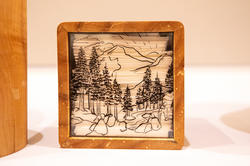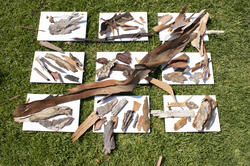Students in this year’s Witness Tree Project studio-seminar create objects out of beetle-infested maple from Vermont’s Marsh-Billings-Rockefeller National Historical Park.
Witness Tree Project 2023 Explores Community and Commemoration via New Hampshire Site
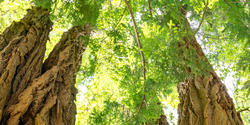
Students enrolled in the latest iteration of RISD’s Witness Tree Project collaboration with the National Park Service are using three species of wood to investigate themes of community, memory and memorialization. The partnership, which began in 2009, provides RISD students with fallen trees that were present for key moments in American history. They are charged with conducting historical research to inform their design process and imbue the objects they create with deeper meaning.
Headed up this year by History, Philosophy and the Social Sciences Professor Daniel Cavicchi and Furniture Design faculty member Megan Callahan 11 FD, this fall’s studio-seminar combo focused on Saint-Gaudens National Historical Park in Cornish, NH. “The park is named for Augustus Saint-Gaudens, a turn-of-the-20th-century American sculptor and influential arts advocate who created dozens of prominent commemorative statues, including the Farragut Monument (1881), the Standing Lincoln (1887), the Robert Gould Shaw and Massachusetts 54th Regiment Memorial (1897) and the Sherman Monument (1903),” says Cavicchi. “He kept returning to the subject of the Civil War and representing it in different ways.”
Saint-Gaudens also started the Cornish Art Colony, a flourishing community of artists, writers and other creatives who drew inspiration from his wooded, 190-acre property. Students visited the site in late September seeking their own inspiration and a better sense of the landscape in which the trees they would be shaping once stood: a black willow, a Japanese lilac and a 150-year-old red oak. In addition to hiking the trails and learning from park rangers, they began thinking deeply about how communities connect with place through material and craft.
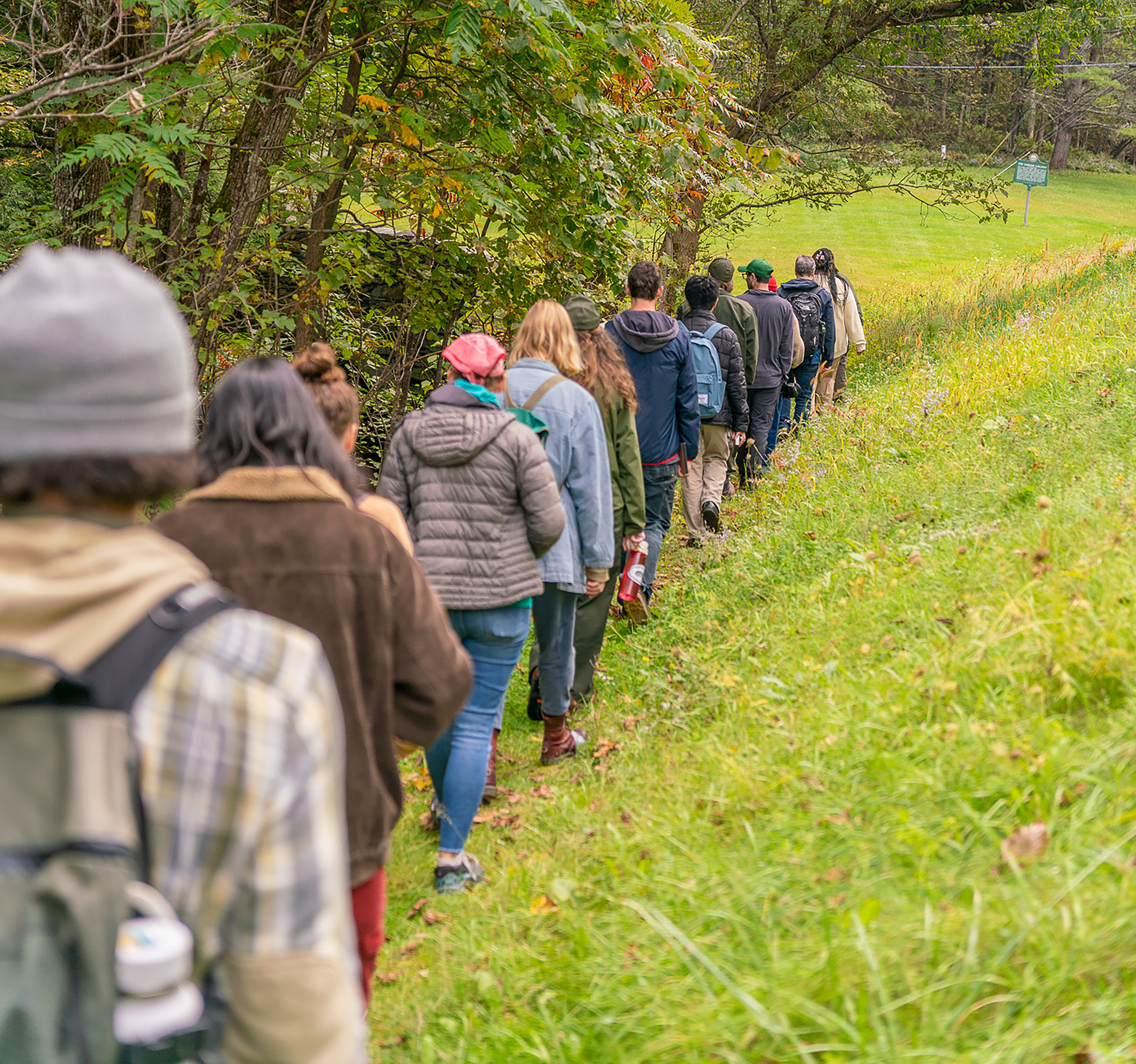
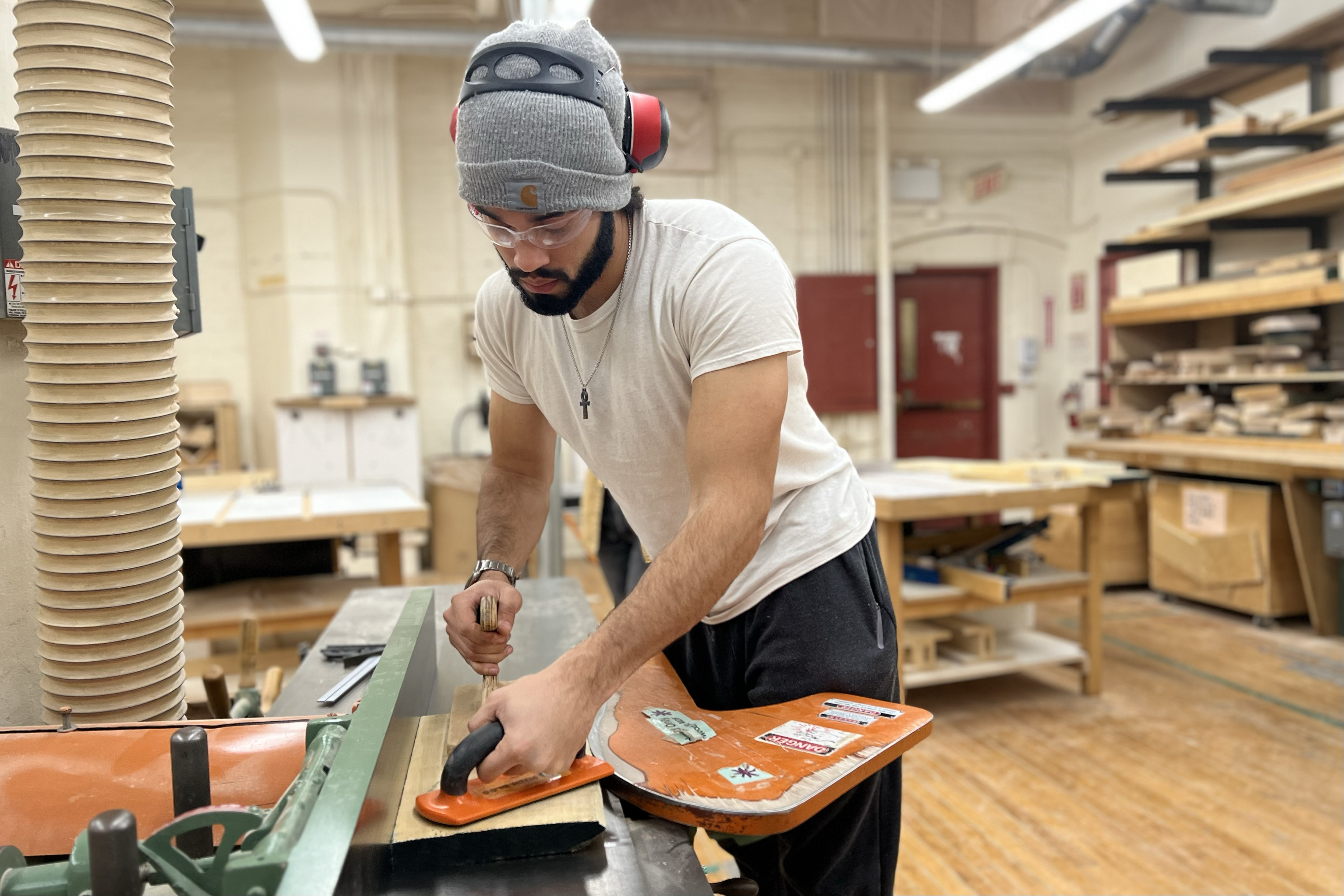
Back in the studio, Callahan got things started with an exploratory assignment using twigs gathered at the site. “This material is irregular, inconsistent in scale and individually unique in form,” she explained. “It has the qualities and properties of wood we have discussed in class, but it also holds the specific characteristics of the tree from which it came and will require careful assessment and thoughtfulness in how you engage with it.”
Jewelry maker Eleanna Feldman 25 JM used the twigs to create rings and pendants. “I definitely wanted to make something wearable,” she explains, “and to embrace the natural qualities of the materials.”
Senior Ethan Howard 24 ID used the assignment to “think about the difference between ornament and structure and consider both additive and subtractive processes.” And junior August Ostrow 25 FD says he has been thinking about “Western culture and its peculiar relationship with nature.”
For the final project, each student considered the act of memorialization and created an object using one or more of the three woods responding to place, history and the themes of the course. They gathered in early December for final critiques, garnering feedback from one another, from their professors and from guest critic Matt King, a sculptor and former RISD faculty member who now teaches at the School of the Museum of Fine Arts at Tufts University.
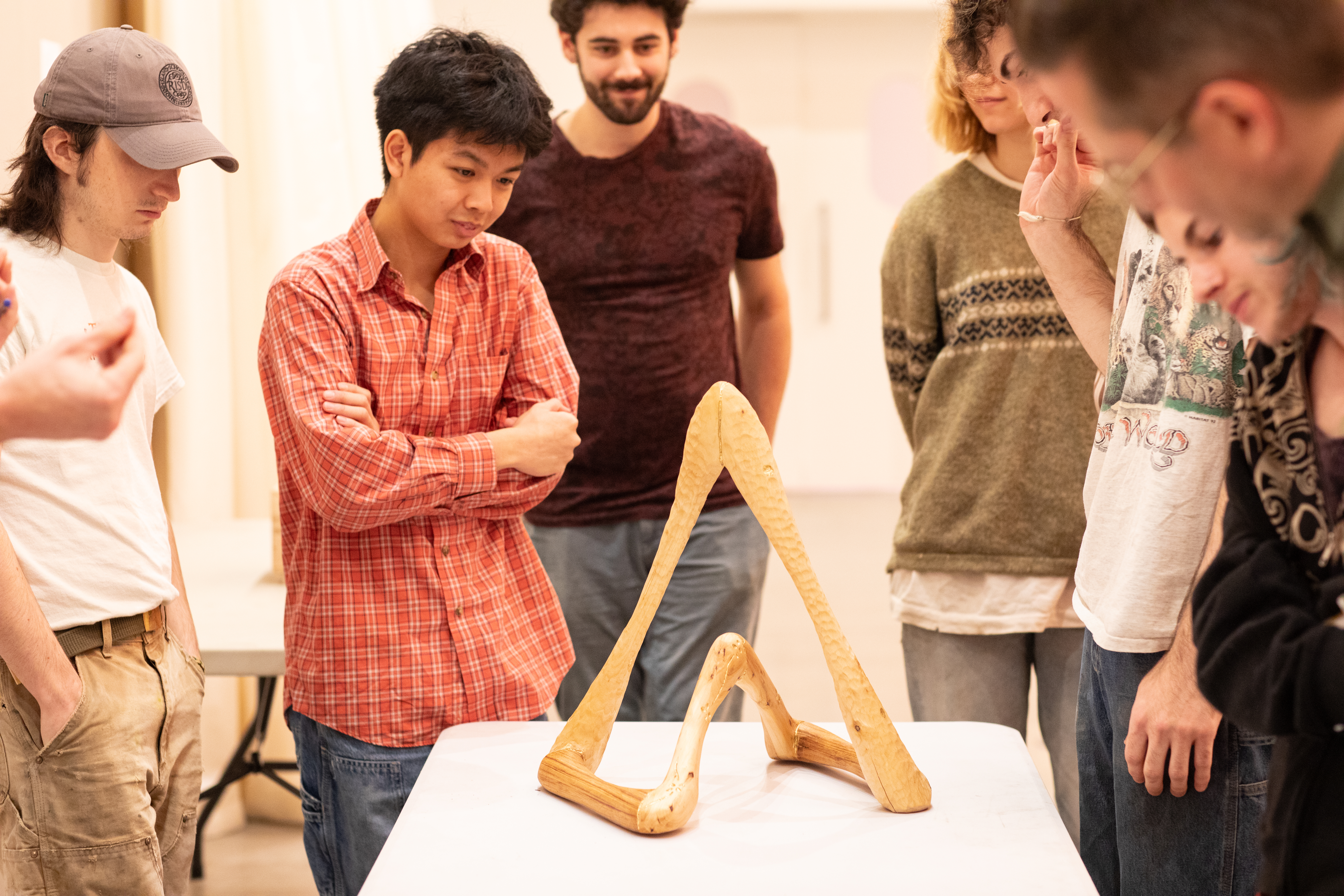
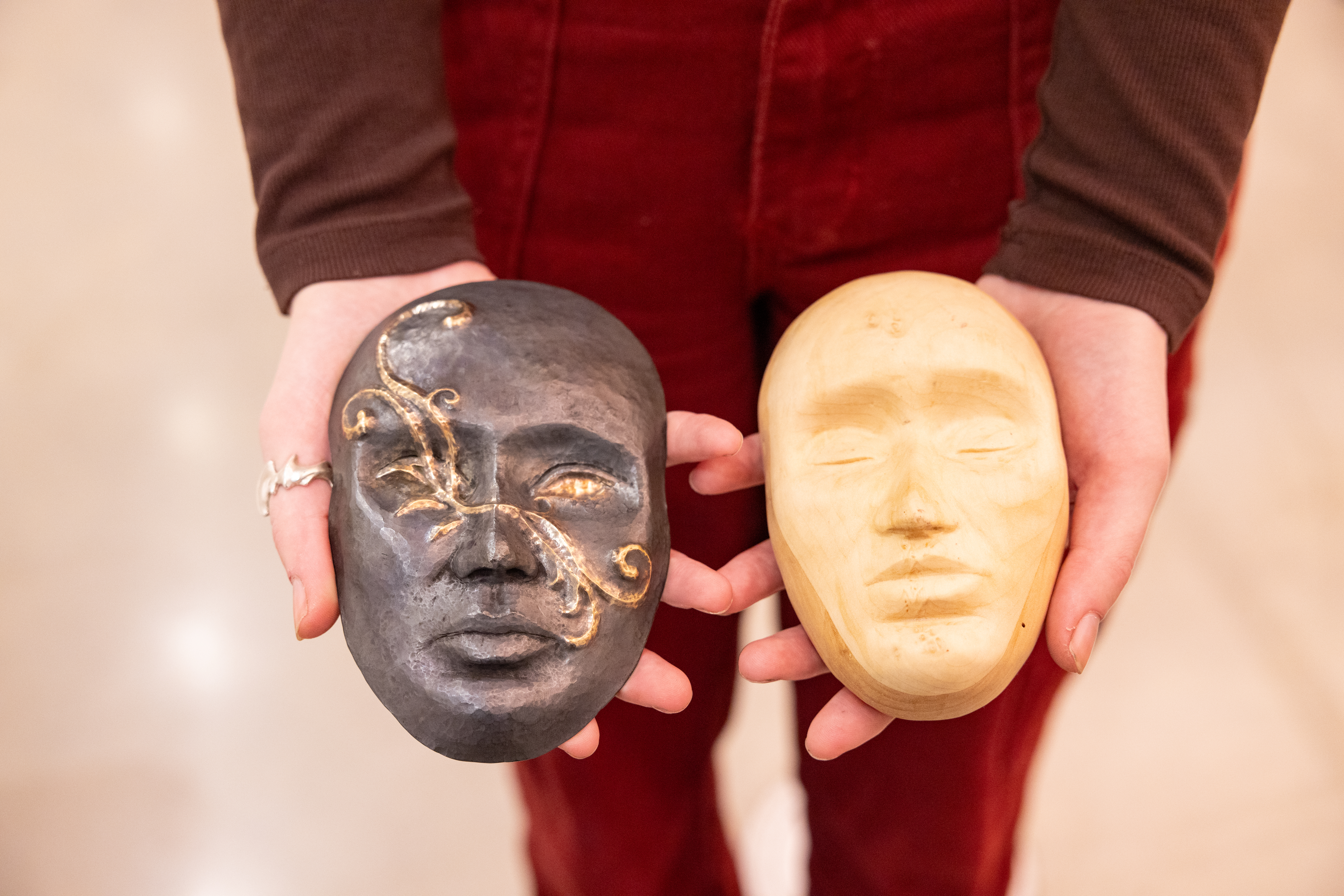
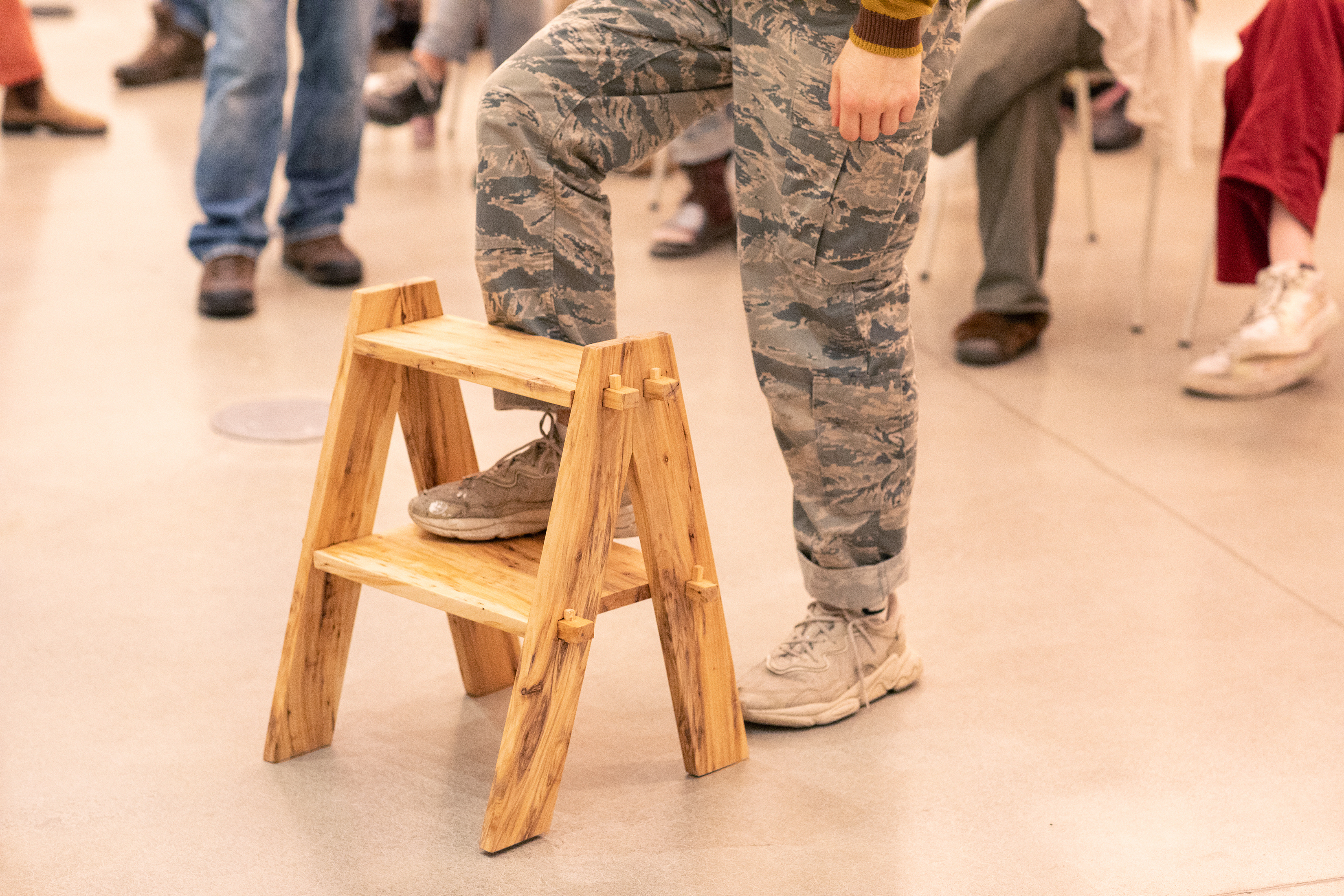
“I advocate for making multiple pieces rather than adding more and more on to your first idea,” King told the students. “If you’re presenting more than one object, the viewer is able to see them in dialogue, which can be really powerful.”
Junior David Schwimmer 25 FD showed a wide array of objects, including a series of mortar and pestles described as “muscular” by King. “What I appreciate about this work,” Callahan added, “is that you seem to be collaborating with the materials and allowing them to guide you, rather than being overly controlling.”
Film/Animation/Video major Max Doulis 24 FAV used a heavily figured piece of the willow to create a step-stool that can be easily disassembled and reassembled thanks to its dowel construction. “I am obsessed with Utopian societies and the idea of individuals coming together to make something larger than the sum of its parts,” says Doulis. “Most of these idealistic communities are short-lived, but we can still learn from something really cool that only lasts for a while.”
Simone Solondz / top image by August Ostrow 25 FD
December 11, 2023
